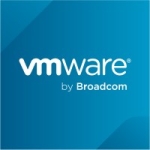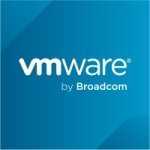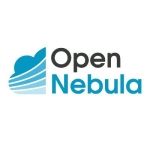We used Nutanix Cloud Manager (NCM) with our dying legacy infrastructure that was sluggish and no longer compliant. We had a higher demand as our business operation became more fast-paced, so we needed a solution like Nutanix Cloud Manager (NCM) that could address all that, which was reliable with no downtime for upgrades and a single pane of glass for management.
What I found most valuable in NCM is the one-click upgrade and the analytics it can provide for hyper-converged infrastructure.
I found the X-Play feature nice, as it's basically a playbook that lets you pick an action based on what happens. The feature is also great for resolving anomalies because it reduces manpower to resolve issues manually and helps lower false positives.
Implementing automation in Nutanix Cloud Manager doesn't take long, and there's not much of a learning curve to it. Once you understand the basics and know your criteria and requirements, it should be up and running relatively fast, another likable feature of the solution.
I've also heard of the Runbook feature, and it's been set up for my organization as part of X-Play. Runbook saves time during manual intervention because it's all within the same ecosystem, so it makes sense.
Similar to other products that provide cloud automation, I find Nutanix Cloud Manager fast in terms of the speed of the outcomes.
My organization uses analytics and capacity planning, some of the good features of NCM. I find them very important in helping determine needs and demands in terms of business requirements.
The built-in Playbooks in the solution also helped free up time for my team to focus on other projects and tasks.
Nutanix Cloud Manager has also saved my organization time, particularly a week, as it lets you do one-click upgrading, which wasn't possible in the old solution my organization used to have. In the past, you had to contact different vendors for drivers, for example, and try to synchronize to ensure you were all on the same page, versus Nutanix Cloud Manager, which offered one-click upgrades.
For example, I could start the upgrade process via NCM on the weekend in the morning. There would be a progress bar, pre-checks, and assurance, and then, come afternoon, the upgrade is completed for a six-node cluster, while in the old solution, it'll take one whole week to complete the upgrade, which even comes with downtime.
I also find that it does its job well, particularly in helping the team address current automation needs while planning for future expansions, because the solution can analyze the number of VMs the team is using and whether the VMs are undersized and oversized, for example.
In terms of how it compares to other cloud management solutions for setup, learning curve, and ease of use, it's similar to Apple versus Android, where it's a matter of preference because both providers do the job. Still, one does the job more simplistically and caters to clients with low staffing, such as my team. My organization is very small and wanted to find a solution, such as NCM, that meets all criteria to help address all issues the organization usually experiences.
I also found that Nutanix Cloud Manager has phenomenal speed in delivering IaaS. My organization used to have servers that took over five minutes to boot up. Now, the process only takes less than two minutes.
There's not much you wouldn't like about Nutanix Cloud Manager because, as a solution, it simply works, and it's very reassuring. One suggestion, however, is for the Prism Pro element to have a built-in support feature that allows you to simply click a button to get support from Nutanix whenever a new alert comes in, rather than needing to call support to ask about the new alert you received.
We've used Nutanix Cloud Manager (NCM) since 2009, particularly the Prism Pro tier.
NCM is a very stable solution.
I've contacted the technical support team for Nutanix, and I found the team knowledgeable, friendly, and professional. The Nutanix support team knows the product very well.
If I compare Nutanix support with support teams from other vendors, Nutanix is a step beyond, mainly because the response time is much better.
My rating for Nutanix Cloud Manager support is nine out of ten.
We used Dell and VMware before switching to Nutanix Cloud Manager. We decided to switch because our legacy infrastructure was sluggish, and compliance, servicing, replacing the parts, and the hours of work we had to devote to all that did not make the old infrastructure cost-effective.
We also wanted a unified solution that provides a single pane of glass, which we found in Nutanix Cloud Manager. We could do our upgrades easily with the solution, without any hiccups.
I was involved in deploying Nutanix Cloud Manager and found the process very straightforward.
A professional service configured Nutanix Cloud Manager for my organization, which also involved migration from the old data center to the new one.
I was not involved in purchasing it, so I have no information on its pricing or cost.
I do feel that it's fair that Nutanix is a product sold as one but with multiple tiers, though you need to make sure it isn't oversold in terms of client needs.
We didn't evaluate other options before choosing NCM, though we inquired about VxRail.
VxRail is also a good product, but it seemed to have a more user-friendly approach, plus the Nutanix account executive was able to give a quote that matched what Dell was offering.
My organization currently tests Nutanix AHV but mainly uses Nutanix Cloud Manager to manage the VMs.
Currently, my organization doesn't feel the need to purchase other solutions besides NCM for automation needs.
The solution is deployed on-premises.
Two people from my organization, plus one from the professional service, took care of implementing Nutanix Cloud Manager.
Nutanix only requires variable maintenance. For the most part, if there's critical maintenance, the team gets an alert, but the recommendation is for maintenance to be conducted every six months or as needed.
My rating for Nutanix Cloud Manager as a solution is nine out of ten.
My advice for others shopping around or deciding on which solution to use is to first ask for a test environment to play with, plus be able to go on a reference call with similar institutions or companies identical to current clients, and not be shy about asking for recommendations or good references.
My organization is a customer.

















